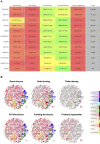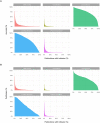Assessment of transparency indicators across the biomedical literature: How open is open?
- PMID: 33647013
- PMCID: PMC7951980
- DOI: 10.1371/journal.pbio.3001107
Assessment of transparency indicators across the biomedical literature: How open is open?
Abstract
Recent concerns about the reproducibility of science have led to several calls for more open and transparent research practices and for the monitoring of potential improvements over time. However, with tens of thousands of new biomedical articles published per week, manually mapping and monitoring changes in transparency is unrealistic. We present an open-source, automated approach to identify 5 indicators of transparency (data sharing, code sharing, conflicts of interest disclosures, funding disclosures, and protocol registration) and apply it across the entire open access biomedical literature of 2.75 million articles on PubMed Central (PMC). Our results indicate remarkable improvements in some (e.g., conflict of interest [COI] disclosures and funding disclosures), but not other (e.g., protocol registration and code sharing) areas of transparency over time, and map transparency across fields of science, countries, journals, and publishers. This work has enabled the creation of a large, integrated, and openly available database to expedite further efforts to monitor, understand, and promote transparency and reproducibility in science.
Conflict of interest statement
The authors have declared that no competing interests exist.
Figures






Comment in
-
Beware performative reproducibility.Nature. 2021 Jul;595(7866):151. doi: 10.1038/d41586-021-01824-z. Nature. 2021. PMID: 34230657 No abstract available.
References
Publication types
MeSH terms
Grants and funding
LinkOut - more resources
Full Text Sources
Other Literature Sources

